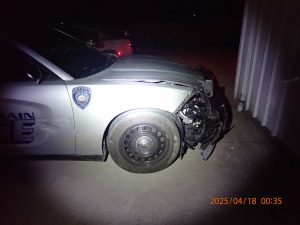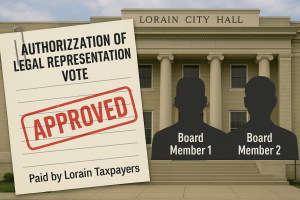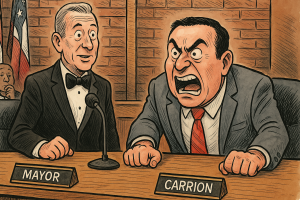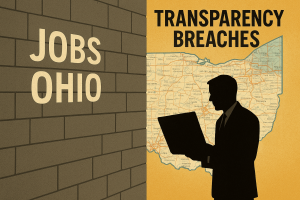Wrecked and Gone: Lorain Police Covered Up a Hit-and-Skip—But the Truth Just Crashed In
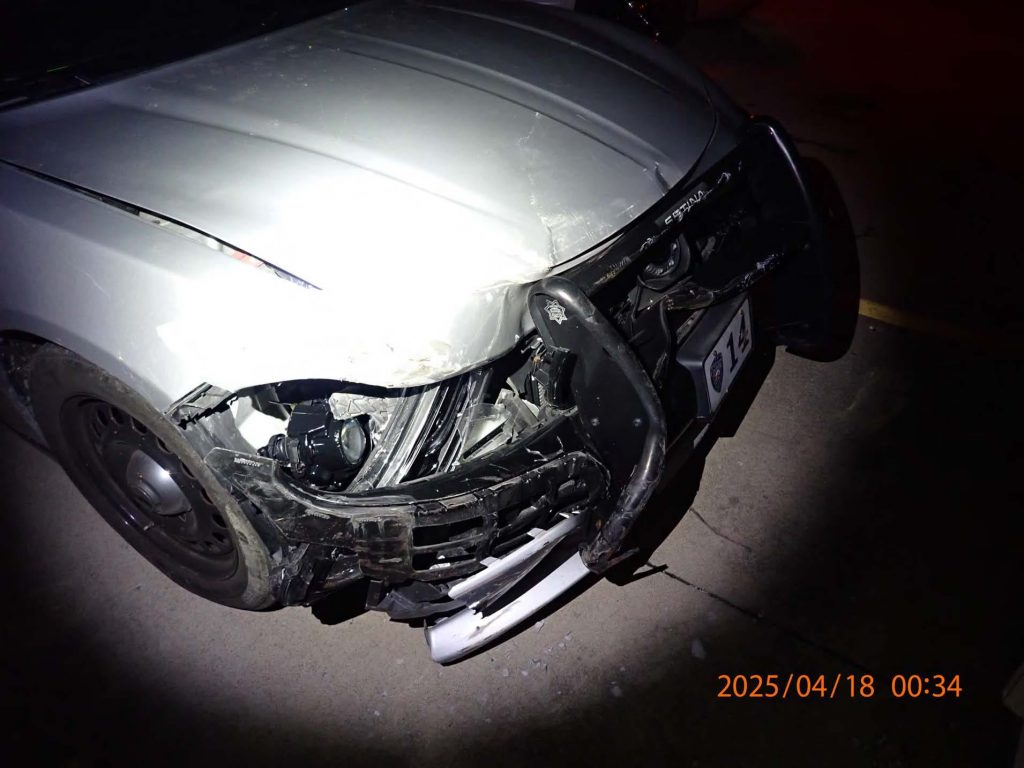
Wrecked and Protected: Lorain Officer Eric Rivera Crashes, Flees, and Walks Away Without a DUI Charge
May 06, 2025
“Alcohol suspected. Scene fled. No public acknowledgment. No press release. No consequences—yet.”
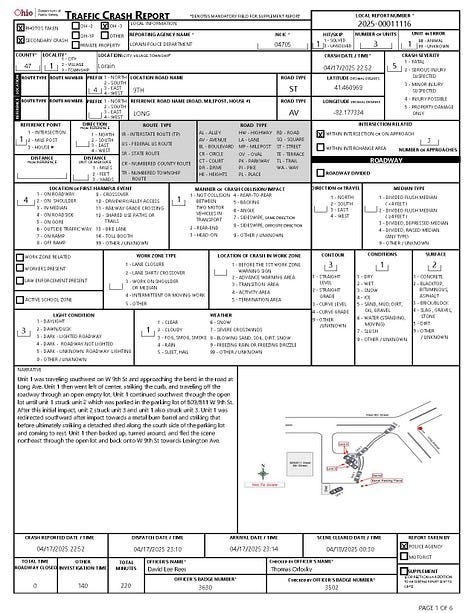
By Aaron C Knapp, Investigative Journalist, LSW, CDCA (retired)
On April 17, 2025, a violent car crash tore through a quiet corner of Lorain’s west side. A silver Dodge Charger veered off W. 9th Street near Long Avenue, blew through a lot, slammed into two parked cars, destroyed a burn barrel, hit a shed, and then—with astonishing audacity—fled the scene. The driver? Eric Jose Rivera, a City of Lorain employee, a Lorain Police Sergeant. The police response? Minimal. No statement. No media release. No charges beyond a traffic ticket.
Thanks for reading Aaron’s Substack! Subscribe for free to receive new posts and support my work.
This is the story they didn’t want you to know—until now.
I. The Crash on W. 9th: What the Public Wasn’t Told
On April 17, 2025, a violent crash erupted at the bend where W. 9th Street curves toward Long Avenue in Lorain, Ohio. Witnesses described hearing an explosive sound as a city-owned Dodge Charger, driven by off-duty Lorain Police Sergeant Eric Jose Rivera, barreled through the neighborhood. According to official crash report #2025-00011116, the Charger crossed the center line, hit a curb, veered off-road, and plowed into a small open lot.
The Charger first struck a parked silver 2004 Honda Civic with enough force to shove it into a green 1996 Honda Accord parked alongside it. Then, Rivera’s vehicle continued forward, smashing into a burn barrel and slamming into a backyard shed. Tire tracks, shattered plastic, and strewn vehicle fragments told the story long before police arrived.
Most damning of all, Rivera did not stay. As residents emerged from their homes, Rivera allegedly reversed out of the lot, turned around, and fled back up W. 9th Street toward Lexington Avenue. The crash report explicitly states, “Unit 1 then backed up, turned around, and fled the scene.” The Dodge was gone by the time police arrived.
“It was chaos. You could see the car tracks, and the way he peeled off—I thought someone might have died,” said one witness, Shelonda Holmes, who called dispatch and remained on scene.
This wasn’t just a moment of panic. It was a violation of the law—and not a minor one. Hit-and-run, or failure to stop after an accident, is codified under Ohio law as a first-degree misdemeanor when no one is injured. Even more disturbing, the crash report checked the box for “Alcohol Suspected.” Yet no DUI charge followed.
When Officer David Rees and Sgt. Thomas Orlosky arrived to investigate, they documented the fleeing driver, the damage to both private and city property, and noted alcohol suspicion. Despite this, Rivera was never arrested. No field sobriety test is documented. No breathalyzer results are included in the report.
The only trace of alcohol testing in the file? A handwritten “.00” beside a checkbox. There is no confirmation of when, how, or if Rivera was tested.
Despite hitting multiple cars, destroying a shed, fleeing the scene, and suspected alcohol use, Rivera was charged only with weaving and failure to control—a minor citation under LCO 331.34. The public wouldn’t learn his name for weeks.
Rivera, who holds a supervisory role in the department, was not only spared public scrutiny—he was quietly placed on paid leave. No official press release. No statement of accountability. Just a damaged neighborhood and unanswered questions.
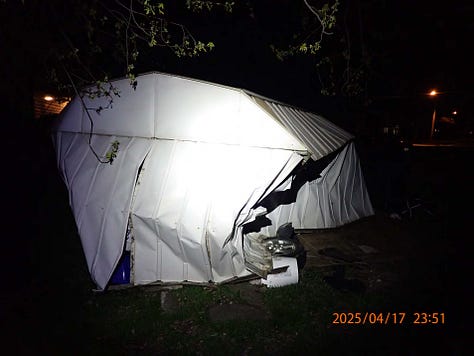
II. Charges Filed—And Charges That Weren’t
The crash might have ended when Rivera left the scene, but the legal issues were just beginning. Rivera was ultimately cited for two violations: failure to control and failure to stop after an accident—both misdemeanors under Ohio law. Yet many in the public are questioning why more serious charges, especially those related to suspected impairment, were never pursued.
Failure to stop after an accident is addressed under Ohio Revised Code 4549.02. It mandates that any driver involved in a crash must stop and provide their identity. Rivera did not. The crash report indicates he reversed and fled, and officers documented this. This alone could have warranted arrest and booking. Instead, Rivera received a citation and was not taken into custody.
More glaring is the issue of suspected alcohol use. The crash report explicitly checks the box for “Alcohol Suspected,” a designation typically made based on observed behavior, odors, or visible signs of intoxication. According to ORC 4511.19, any suspicion of driving under the influence should trigger immediate field sobriety tests and a chemical BAC assessment. No such test is recorded. No arrest occurred. The only reference to alcohol level is a handwritten “.00,” with no supporting documentation.
Under Ohio’s implied consent law, drivers are required to submit to chemical testing if arrested for OVI. Refusing a test leads to an automatic license suspension. But Rivera was never arrested, which meant the statute was never triggered. If alcohol was truly suspected, this gap raises significant concerns.
Even if Rivera had tested below the legal limit, field sobriety tests should still have been conducted and documented. The absence of such protocol suggests either a lapse in procedure or the exercise of discretion in a way that defies consistency.
Civilian drivers in similar scenarios often face immediate arrest. Property damage, a suspected DUI, and fleeing the scene are rarely treated lightly. In Rivera’s case, there appears to be a departure from standard enforcement expectations.
Field sobriety test results, probable cause documentation, or incident narratives justifying discretion are not included in the crash file. The lack of these elements leaves an incomplete account and undermines public confidence in the thoroughness of the investigation.
If there were legitimate reasons not to test Rivera or to refrain from pressing further charges, they have not been disclosed. No official explanation has been provided by the Lorain Police Department, the City of Lorain, or the prosecutor’s office.
The implications of this silence are broad. What might have been a textbook case of DUI and hit-skip became a citation and paid administrative leave. Without transparency, the perception of preferential treatment persists.
The community deserves answers. Until clear documentation is produced and accountability demonstrated, the question remains: Was Rivera treated like any other driver—or like one of the department’s own?


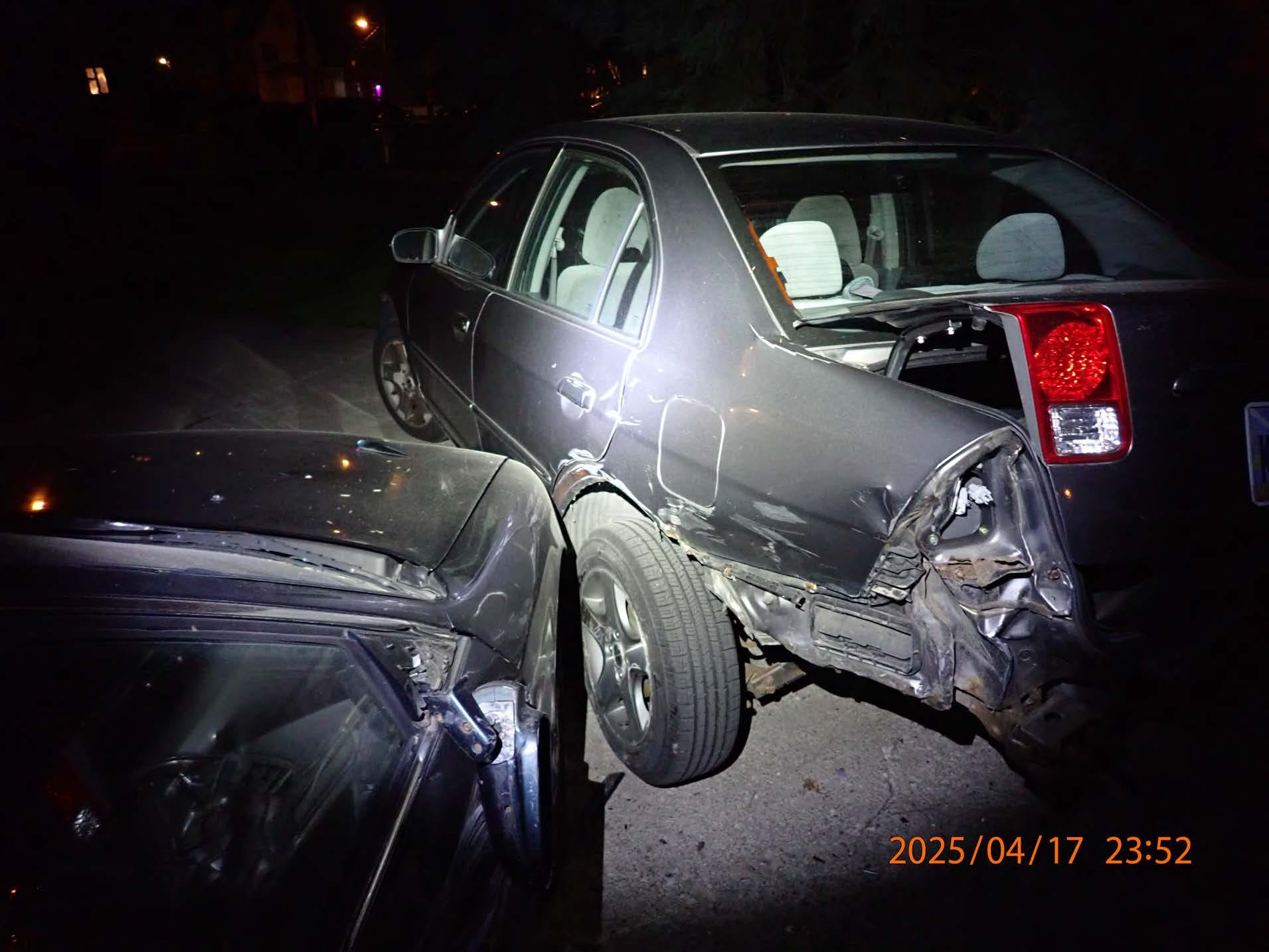
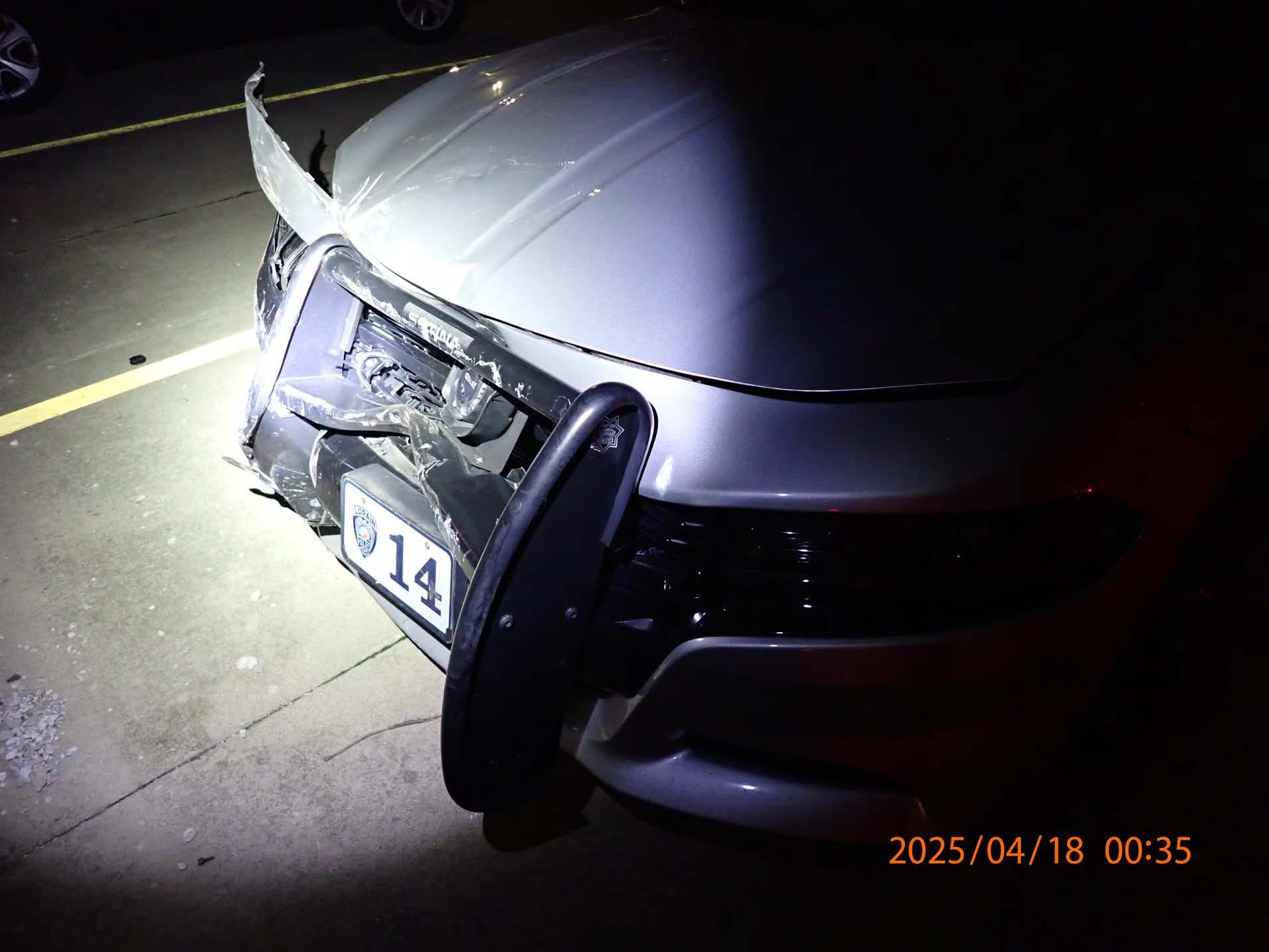

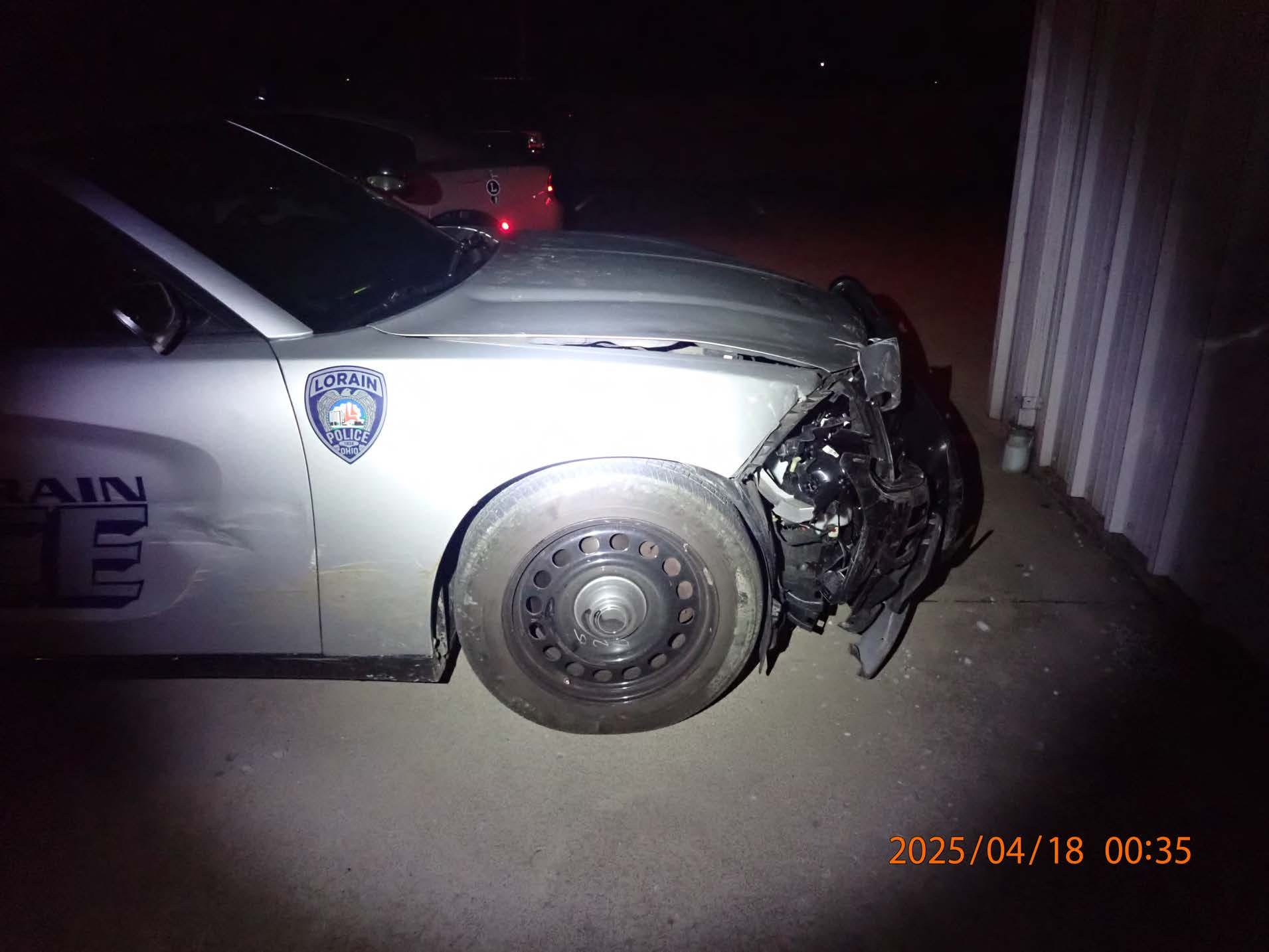
III. Media Silence and Public Misinformation
In the immediate aftermath of the crash, no press release was issued by the Lorain Police Department. There was no public statement acknowledging that an off-duty officer in a city-owned vehicle had left the scene of a crash. Although the crash was documented and citations were issued, the absence of proactive communication left the public uninformed.
The first mentions of the incident in local media came weeks after the fact, in short news items in the Morning Journal and Chronicle-Telegram. These reports confirmed the citations but offered little context. Notably, they included the statement that “no evidence of alcohol” was found—a phrase at odds with the crash report’s notation that alcohol was suspected.
Public access to the crash report was delayed, and until it was obtained, most residents had no idea a hit-and-skip involving a police officer had even occurred. The lack of immediate transparency limited public awareness and hindered scrutiny. (I recieved the report today 5/06/2025 these are usually available online the next day in other accidents)
Crash reports for incidents involving city vehicles and employees typically warrant some form of public acknowledgment. In this case, the silence created the appearance—if not the reality—of an attempt to minimize attention.
No press event or departmental statement was issued in the days following the crash. This stands in contrast to past practice, where the department has publicized other vehicle crashes or internal investigations, even for lower-profile incidents.
The absence of transparency extended to social media. Neither the City of Lorain nor the police department published updates about the crash, the involved officer, or the internal review process. These omissions contributed to public frustration.
The timeline of information release reflects a reactive—not proactive—approach to public communication. Only after citations were filed and outside inquiries were made did information begin to surface.
In communities where law enforcement transparency is already under strain, this pattern raises valid concerns. Consistent communication is a cornerstone of public trust. Without it, even lawful decisions can appear suspicious.
If there were compelling reasons for the department’s silence—such as ongoing administrative review—they have not been articulated publicly. In the absence of explanation, the public is left to draw its own conclusions.
The city’s communications strategy—or lack thereof—allowed a serious incident involving a police officer to fade from view before it ever truly entered it. That silence, more than any single decision, may be the most damaging element of all.
IV. The Officers Involved: Familiar Names, Unfamiliar Accountability
Officers David Lee Rees and Thomas Orlosky were the investigating officers listed in the crash report filed after Rivera’s April 17 hit-skip. Both are long-serving members of the Lorain Police Department and currently hold the rank of sergeant. City documents show that Rees has previously served in patrol and K-9 roles, while Orlosky has worked in traffic enforcement.
Neither officer has been publicly disciplined in connection with this incident. However, the decisions made during their investigation have raised valid questions. Despite the crash report explicitly indicating that alcohol was suspected, there is no documented evidence that a field sobriety test was conducted. Nor is there confirmation of a formal breathalyzer test.
Ohio Revised Code 4511.19, which governs operating a vehicle under the influence, gives officers clear authority to conduct field sobriety testing when impairment is suspected. The crash report checked the box for “Alcohol Suspected,” which should have triggered further investigation. Yet, no arrest occurred, and the report lacks sufficient detail to show what actions, if any, were taken to assess Rivera’s sobriety.
The absence of documented testing raises procedural concerns. Officers are required to justify their actions—or inactions—through narrative documentation, especially in cases involving suspected alcohol use. In this instance, no narrative supplements are attached to the report, leaving a gap in the accountability trail.
Under ORC 4511.191, implied consent laws require testing if a driver is arrested for OVI. But since Rivera was never arrested, the statute was never triggered. This raises a troubling possibility: by choosing not to arrest Rivera despite alcohol suspicion, the officers effectively avoided initiating a process that would have required sobriety testing.
These discretionary decisions deserve scrutiny. Rees and Orlosky were not dealing with an unknown driver—they were responding to a crash involving a fellow officer. That relationship introduces a potential conflict of interest. The integrity of any internal investigation depends on whether those responding upheld the same standards they would apply to any other citizen.
The official crash report, as released, includes no mention of body-worn camera footage or dash cam recordings. If such video exists, it has not been made public, nor has it been referenced in available documents. The absence of this evidence leaves a void that should be filled.
If either officer witnessed behavior consistent with impairment—slurred speech, glassy eyes, or the smell of alcohol—they were obligated to document it. If such signs were absent, they should have documented that too. Without either, the report remains incomplete.
There is also no indication that the officers were interviewed as part of a broader administrative investigation. If their actions were reviewed or cleared internally, no public record of those findings has been provided.
In the end, the credibility of the department rests not only on how it disciplines misconduct but how it investigates its own. The omissions in this case—whether accidental or deliberate—point to a larger cultural issue. One where silence and omissions speak louder than any sworn statement could.
V. Ohio Law vs. Officer Discretion: A Legal Gap Wide Enough to Drive Through
Ohio’s legal framework around operating a vehicle under the influence (OVI), leaving the scene of an accident, and implied consent is unambiguous. When there is probable cause to suspect impairment, police officers are mandated to initiate testing and follow arrest protocols. In Rivera’s case, the facts laid out in the crash report meet multiple thresholds that should have triggered enforcement.
The most compelling statutory tool in such cases is Ohio Revised Code 4511.19, which criminalizes operation of a motor vehicle under the influence of alcohol or drugs. This law is not optional—it obligates law enforcement to act when signs of impairment are present. The crash report’s notation of “Alcohol Suspected” strongly suggests that such signs existed. Yet no OVI charge was filed, and no formal test results were made part of the public record.
Equally clear is the obligation under ORC 4549.02, which governs failure to stop after an accident. Rivera’s flight from the crash scene should have resulted in a first-degree misdemeanor charge. While he was cited for this violation, he was not arrested. Instead, the report simply documents his departure and indicates he was later identified.
Most concerning, however, is the failure to apply ORC 4511.191—the implied consent statute. This provision mandates that drivers, by operating a vehicle in Ohio, consent to alcohol or drug testing if arrested for OVI. The statute even permits administrative license suspension for test refusal. But Rivera’s arrest never occurred. The process was never triggered, and thus, this legal safeguard failed entirely.
This pattern—checking the alcohol box while avoiding arrest—creates a loophole that undermines the statute’s purpose. The law is structured to prevent exactly this type of evasion: a suspected impaired driver leaving the scene, avoiding immediate arrest, and never being subjected to testing.
Whether Rivera was actually impaired may remain unknown. But that is beside the point. The legal issue is whether the suspicion, based on the scene and officer observations, required further action. The law says yes. The officers said no—or at least failed to document otherwise.
Civilian drivers in similar cases often face a very different outcome. They are pulled from their vehicles, subjected to roadside tests, sometimes even taken for blood draws at local hospitals. The speed with which those actions occur is routinely justified by citing the very same laws that were neglected here.
By bypassing the mechanisms of the law—arrest, testing, documentation—the officers effectively prevented the public from knowing whether an OVI occurred. This does not merely look like preferential treatment; it functionally neutralizes the legal system itself.
That legal vacuum cannot be filled by speculation. It can only be addressed by transparency. The public needs to see the process. In this case, the process appears to have been avoided or concealed.
The consequence is a breakdown of equal justice. When officers are empowered to selectively enforce—or ignore—statutes in cases involving fellow officers, the law loses credibility. Rivera may have avoided charges. But the system lost something more: its legitimacy.
VI. Two Standards of Justice: One for Civilians, One for Officers
Perhaps the most jarring aspect of the Rivera incident is not just the failure to apply Ohio law—it’s how starkly the treatment contrasts with how everyday civilians are handled. Across Ohio and in Lorain specifically, drivers accused of hit-skips or suspected OVIs face immediate and often harsh consequences. Rivera, by contrast, walked away from the scene and faced only a citation.
In Lorain County alone, dozens of OVI arrests are made each month. These typically involve field sobriety tests, breathalyzer assessments, bodycam footage, arrests, and booking photographs. The names of the accused are publicly disclosed, and press releases are often circulated when high-profile or city-affiliated individuals are involved. None of that happened in Rivera’s case.
When civilians flee a crash scene—particularly one with property damage—the result is usually swift: license suspension, possible jail time, and insurance consequences. The discrepancy in Rivera’s treatment points to a systemic pattern of differential enforcement.
The fact that Rivera was operating a city vehicle should have heightened—not softened—scrutiny. Government vehicles are held to a higher standard. The crash involved public property, occurred in a residential neighborhood, and impacted at least two civilians whose vehicles were struck. Yet the city has remained silent about whether they have been compensated or even formally notified.
Had a citizen crashed into two vehicles, destroyed a shed, left the scene, and returned home without alerting police—while alcohol was suspected—they would almost certainly face criminal charges. The law does not distinguish based on job title, but enforcement often does.
Ohio’s implied consent law exists to eliminate ambiguity in suspected DUI cases. It operates on the principle that when a driver refuses to submit to testing after being stopped or arrested, legal consequences must follow. But when officers choose not to arrest or test their own, they bypass this framework entirely.
This isn’t just about one crash or one officer. It reflects a wider issue in law enforcement: when officers are treated as exceptions to the rules they enforce, public faith in the system erodes. The idea of equal protection under the law is undermined when discretion is selectively applied.
The community sees this disparity. In forums, local Facebook groups, and neighborhood conversations, residents have asked why Rivera was not arrested. They wonder why no field test occurred. They’re left to speculate—because official channels remain silent.
That silence fuels mistrust. And mistrust, when compounded by double standards, fractures the relationship between police and the public they serve. Accountability isn’t about punishment—it’s about proving that no one is above the law.
Until the city can answer, plainly and publicly, why Rivera was treated differently than others would have been, this story will remain more than a scandal—it will stand as an indictment of the system itself.
VII. Paid Leave, Public Dismissal: Rivera’s Continued Employment Raises Eyebrows
Following the crash, Sgt. Eric Rivera was not suspended without pay, terminated, or reassigned. Instead, he was placed on paid administrative leave—a standard policy in cases under internal investigation, but one that continues to spark public frustration given the seriousness of the conduct alleged in the crash report.
Paid leave means that Rivera continues to collect a taxpayer-funded salary despite a pending investigation into his conduct. According to routine city payroll disclosures, Rivera has remained on the books at full pay while the city weighs disciplinary options. There has been no announcement of a disciplinary hearing or any transparency about investigative progress.
This type of administrative purgatory is not uncommon in public safety employment. But in a case involving suspected alcohol use, fleeing the scene of a crash, and property damage—all in a city-owned vehicle—many in the community expected faster and more visible action. Instead, the department has offered no timeline for resolution, no updates to the public, and no comment from its acting leadership.
The silence has not gone unnoticed. Critics have asked whether Rivera’s continued employment—despite the serious allegations—sends a message that misconduct is tolerated, or worse, quietly excused within the ranks. They point to other cases where civilians have lost jobs, licenses, or liberty over far less.
The issue is not just that Rivera is on leave. It’s the broader question of accountability for city employees, especially those empowered to enforce the law. Rivera, a ranking officer, represents the department not just in uniform but in his behavior off-duty. Crashing a marked vehicle while off-duty and fleeing the scene without testing violates both public trust and departmental standards.
No document released by the city has indicated whether Rivera has been ordered to complete substance abuse counseling, vehicle safety training, or internal affairs interviews. These are common post-incident expectations in other departments across the state.
The failure to disclose even these basic facts raises transparency issues that stretch beyond the Rivera case. Are Lorain police officers held to internal behavioral standards even when off-duty? What protocols exist for post-accident review? What are the consequences for failing to remain on-scene when driving city property?
As of this writing, Rivera remains a paid employee of the Lorain Police Department. If there is a review board, the city hasn’t confirmed it. If Rivera has been interviewed or reprimanded internally, the public hasn’t seen the findings. If a decision has been made, it hasn’t been shared.
Until answers are provided, residents will remain in the dark about whether one of their senior officers is being held accountable—or shielded by policy and silence. The longer this persists, the more it appears that paid leave is being used not as a safeguard for investigation, but as a cover for delay.
VIII. Community Trust Undermined: A Crisis of Confidence
The Rivera incident has once again cast a harsh spotlight on Lorain’s already fraught relationship between law enforcement and the community it serves. For residents, the optics of the crash—paired with the lack of accountability—have confirmed long-standing fears: that officers are protected, and the public is not.
In many neighborhoods across Lorain, residents have expressed frustration with what they perceive as selective enforcement. Community leaders have pointed to this case as a textbook example of why calls for police reform remain urgent and necessary.
“How can we tell young people to trust the system,” one resident asked, “when it won’t even hold its own officers accountable for a hit-and-run?”
Lorain has been the focus of past investigations into policing practices and transparency lapses, especially around use-of-force incidents, racial disparities, and internal discipline. The Rivera case adds fuel to an already simmering fire. A public servant crashing a city car, fleeing, and remaining on paid leave with no charges beyond citations has become a symbol of systemic privilege.
Public trust is not just a byproduct of effective policing—it is a foundational necessity. When that trust is fractured, crime reporting drops. Community cooperation wanes. Witnesses stay silent. And ultimately, both residents and officers are less safe.
Trust cannot be demanded—it must be earned. And earned trust comes from transparency, accountability, and a consistent application of justice. Rivera’s case so far offers none of those. Instead, it reveals a culture more concerned with protecting its own than upholding the law.
In response, several residents have called for independent oversight. Some are demanding that the Ohio Bureau of Criminal Investigation (BCI) step in to evaluate whether the city has acted appropriately. Others have submitted public records requests and are considering civil rights complaints.
City Council has yet to hold a public hearing on the matter. Mayor Jack Bradley has not issued a formal statement. And the Lorain Police Department has not confirmed whether any internal review has concluded. This silence allows speculation to thrive—and further erodes community faith.
The longer city leaders avoid addressing the matter publicly, the more damage is done—not just to public image, but to real relationships with the people of Lorain. Elected officials and department heads are not just accountable to the law—they’re accountable to the people.
Every day that passes without answers is another day that residents are reminded of the double standard. They see the police cruiser tire marks. They see the damaged cars. And they see the officer still getting paid.
In Lorain, where residents have long demanded a new era of transparent and community-first policing, the Rivera incident is more than a public safety issue. It’s a crisis of credibility—and one that won’t be resolved with silence.
IX. Final Thought: What Accountability Looks Like
The crash that occurred on April 17, 2025, was not just an isolated mistake. It was a warning shot. A red flag that speaks volumes about what happens when those tasked with upholding the law are allowed to bypass it. Sgt. Eric Rivera’s conduct, and the city’s response, have raised every red flag a resident could fear: silence, secrecy, and selective enforcement.
Accountability begins with honesty. It requires that public officials—not just police officers, but department heads, prosecutors, and mayors—respond to serious incidents with candor. Rivera’s name should not have been buried for weeks. The crash should not have been handled in virtual darkness. The public should not be forced to file records requests just to learn if a city vehicle struck their neighbor’s car.
Second, accountability means equity. Every driver in Lorain—regardless of their badge or rank—should be subject to the same traffic laws, sobriety checks, and consequences. There is no clause in Ohio law that exempts city employees from OVI suspicion, hit-skip enforcement, or testing requirements. Discretion is not a shield for misconduct.
Third, the city must rebuild trust with action, not apologies. Paid leave may be standard policy, but it cannot become a default excuse for delay or deflection. If internal investigations are occurring, the public deserves to know the process and the timeline. If no internal investigation is underway, that is a failure of leadership.
Transparency does not mean violating due process. It means showing the public that due process exists and is being followed fairly. In this case, the silence has spoken louder than any disciplinary decision could.
The Rivera case is not about vengeance or public shaming. It’s about integrity. Can the Lorain Police Department police itself? Can the city confront its mistakes publicly? Can leadership show the same urgency for transparency that it demands from citizens during a crime wave or budget hearing?
Public officials should not fear scrutiny. They should welcome it. Because only under scrutiny can real reform begin. Only with public pressure can a system built on silence be reshaped into one rooted in trust.
Lorain deserves a department that serves—not one that shields. It deserves leaders who step forward—not ones who hide behind procedure. And it deserves a legal system where no one, not even a sergeant in uniform, is above the rules.
This isn’t just about one crash. It’s about whether Lorain is willing to confront a pattern: of silence, avoidance, and institutional protection. If we can’t fix that, then no policy or PR campaign will matter.
The crash on W. 9th Street may have ended in shattered plastic and splintered wood. But the damage to public confidence runs far deeper. Accountability is the only path forward—and it’s long past due.


